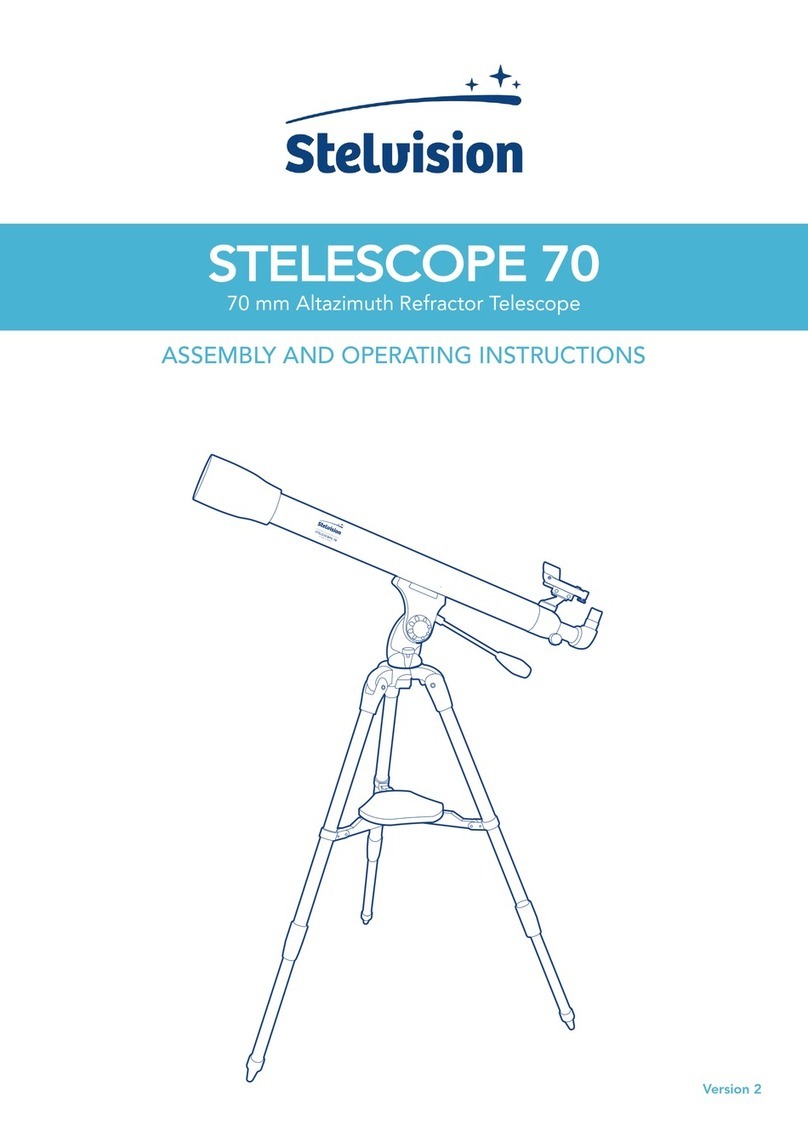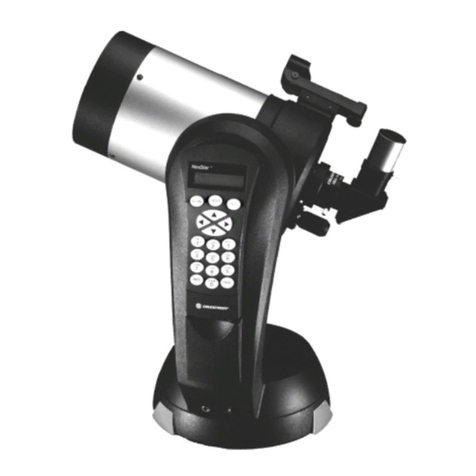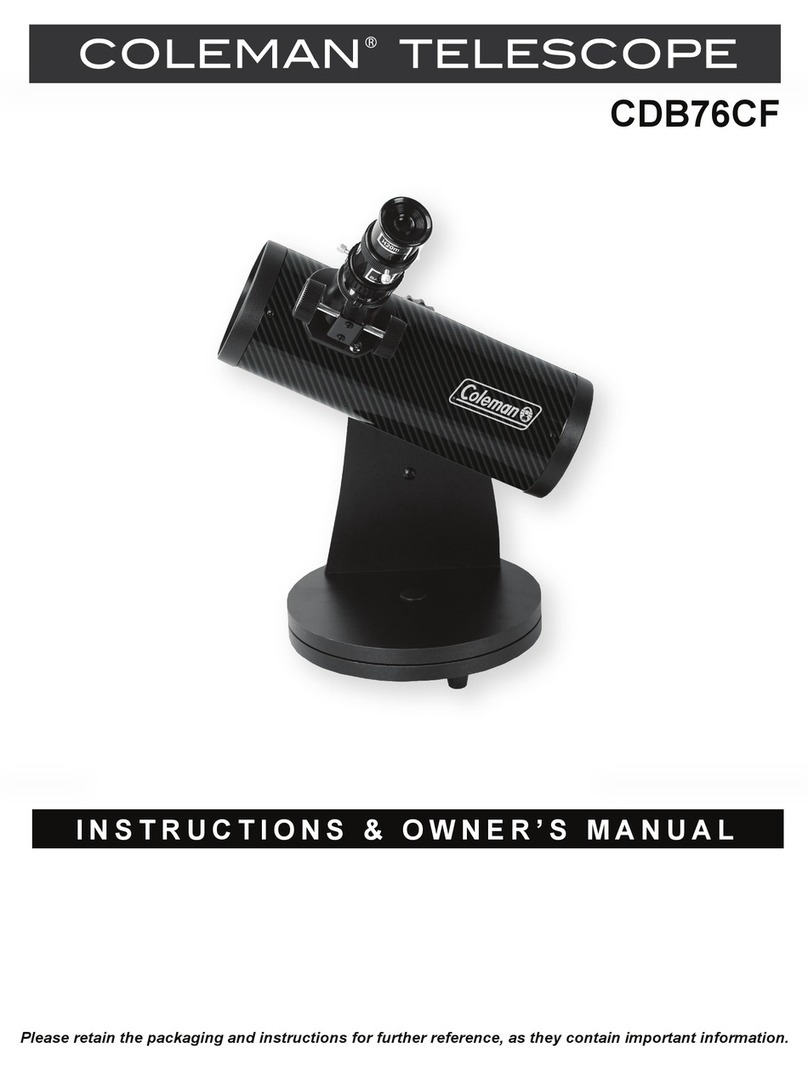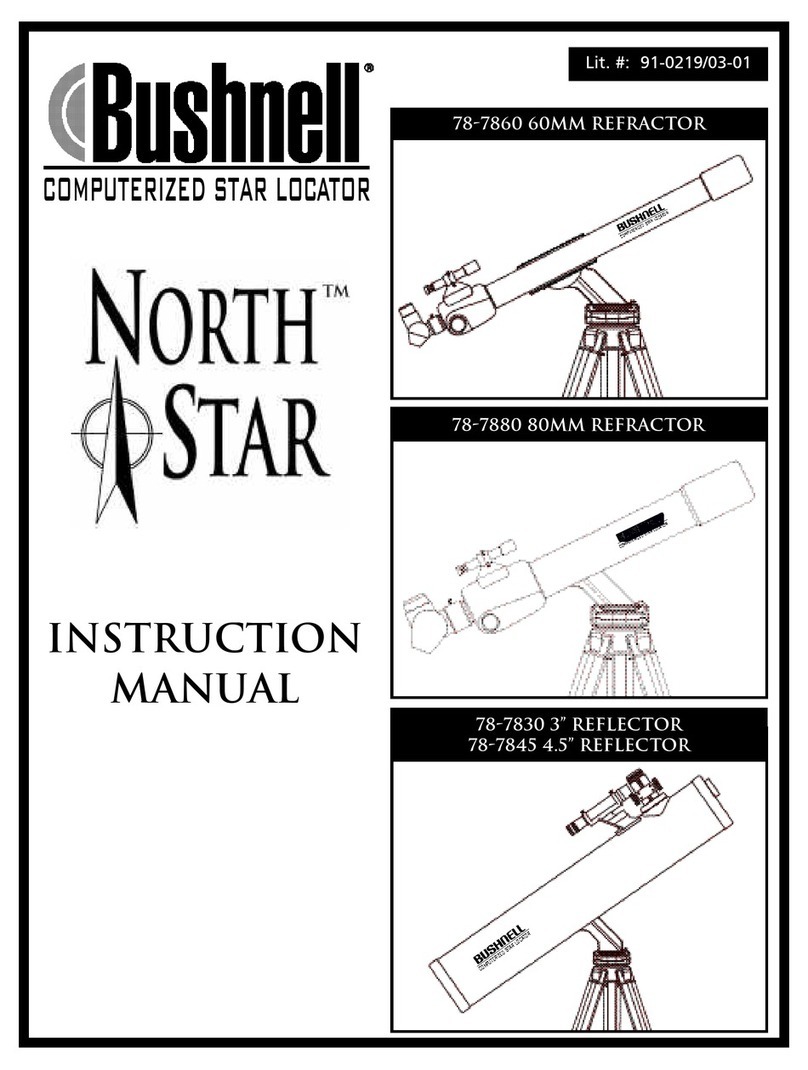TNG HARPS-N User manual

Telescopio Nazionale Galileo
HARPS-N Operation Guide
Draft Manual version 2.6
TNG-MAN-HARPN-0003
Date: 23/03/2020
Prepared R. Cosentino

Change Record
Issue/Rev.
Date
Section/Page affected
Reason/Remarks
V1.0
14-12-2012
First version
V1.1
14-01-2013
Autoguider added
V1.2
04-02-2013
V2.0
12-02-2013
New sequencer and Labview SW
V2.1
V2.2.3
22-05-2013
All document
Paragraph 3.5 added
V2.2.4
19-11-2013
All document
V2.2.5
15-01-2014
New sequencer and expmeter
V2.2.6
18-03-2014
Double star guiding procedure added
V2.2.7
11-09-2014
Minor changes
V2.3.0
22-07-2015
Change sequencer figure
New sequencer version
V2.4.1
13/12/2016
some warnings was added
V2.4
23/08/2017
LCU paragraph
New LCU
V2.6
23/03/2020
AG paragraph
New AG

TNG-MAN-HAN-0003 3
Contents
1Introduction..........................................................................................................................................................4
1.1 Scop
e
...............................................................................................................................................................4
1.2 Additional information .............................................................................................................................4
1.3
Contact
information ..............................................................................................................................4
1.4
Reference documents
...................................................................................................................4
2Before the observations ...................................................................................................................................5
2.1 The Observation blocks preparation...................................................................................................5
2.2 The Sequencer GUI (initialization and operation) .........................................................................6
2.2.1 Initialization .........................................................................................................................................7
2.2.2 Sequence Control buttons...............................................................................................................8
2.2.3 Instrument control buttons............................................................................................................8
2.2.4 Other changes......................................................................................................................................8
2.2.5 Before the calibration.......................................................................................................................9
2.2.6 The standard calibration (daily calibration) ........................................................................ 10
3Observations...................................................................................................................................................... 11
3.1 The start night........................................................................................................................................... 11
3.2 The focus procedure ............................................................................................................................... 11
3.3 The pointing model procedure........................................................................................................... 12
3.4 The science OB execution ..................................................................................................................... 12
3.5 The Observing Control Software (OBS)........................................................................................... 13
3.5.1 The pointing/tracking sends the telescope to the limit switch..................................... 13
3.6 The Exposure meter................................................................................................................................ 15
3.7 The Autoguide........................................................................................................................................... 15
3.7.1 Starting the autoguide................................................................................................................... 15
3.7.2 Parameter for the acquisition and centroid computation............................................... 16
3.7.3 Corrections......................................................................................................................................... 16
3.7.4 Telescope offset ............................................................................................................................... 16
3.7.5 Piezo operations .............................................................................................................................. 17
3.7.6 Some examples................................................................................................................................. 17
Appendix A - Useful Harps-N webpages........................................................................................................ 18
Appendix B - Actions of multi task commands........................................................................................... 18
Appendix C - Actions of focus procedure commands............................................................................... 19
(While the user can execute actions: repoint, expose, get info, etc)................................................. 19
Appendix D –List of acronyms ......................................................................................................................... 19

TNG-MAN-HAN-0003 4
1Introduction
1.1 Scop
e
This User Manual is
i
n
t
e
nd
e
d
to
give all necessary
i
n
f
o
r
m
a
t
io
n
to
p
o
t
e
n
t
i
a
l
users of
the
HARPS-N
i
n
s
t
r
u
m
e
n
t
,
t
o
help
t
h
e
m
to
use
the
i
n
s
t
r
u
m
e
n
t
and manages the observation
at the TNG telescope.
The following
d
oc
u
m
e
n
t
s are closely
r
el
a
t
e
d
to
t
h
i
s manual and should be
co
n
s
u
l
t
e
d
as well:
The HARPS-N User Manual (
TNG-MAN-HARPN-0002
)
The
HARPS-N Startup M
anua
l (TNG-MAN-HARPN-0001)
The New Short Term Scheduler User Manual (NSTS)
The DRS User Manual (
OG-MAN-HAN-13-0004
)
HARPS-N Autoguide Manual
The standard calibration
B
o
t
h
are available through
the
TNG
web
pa
ge
http://www.tng.iac.es/instruments/harps/
1.2 Additional information
The
latest
i
n
f
o
r
m
a
t
io
n
upda
t
e
s
about the
HARPS-N
i
n
s
t
r
u
m
e
n
t
can be found on
the
HARPS-N web
pa
ge
s
http://www.tng.iac.es/instruments/harps/
1.3
Contact
information
Feedback on
t
h
i
s User Manual from users is encouraged. Please email
to
1.4
Reference documents
HARPS-N User Manual
HARPS-N Quick Start Guide
HARPS-N LCU Manual
New Short Term Scheduler User Manual (NSTS)
DRS User Manual
Ucam User manual
Templates Reference Guide
Thorium-Argon Atlas
Design of the LCU for HARPS-N
HARPS-N Autoguide Manual
The standard calibration

TNG-MAN-HAN-0003 5
2Before the observations
Starts up the system following the instructions of the “HARPS-N Quick Start Guide” and take
care to read all the advices reported at the beginning of the manual.
2.1 The Observation blocks preparation
From the NSTS the observer can prepare the sequence of observation blocks of the night
(Figure 1).
The target can be inserted directly in the NSTS or by using a catalog file that contains the
objects information. The format of the catalog file is an ascii file and the fields separator is a
TAB (ascii code = 9).
The fields of the catalog are shown in Table 1, the mandatory fields are shown in bold format.
An example of catalog file is shown in the HARPS-N webpage:
(http://www.tng.iac.es/instruments/harps/data/SpStdHARPSN.cat)
Table 1- Catalog file entries
name
object code
alpha
right ascension (nn:nn:nn.nn)
delta
Declination (nn:nn:nn.nn)
mualpha
proper motion alpha(arcsec/year)
mudelta
proper motion delta (arcsec/year)
mv
magnitude V
bv
Bv
TypSp
spectral type
radvel
mean radial velocity (KM/sec) or -99999
snr
Signal/Noise (550nm)
spectr
spectral type for the mask(two chars only)
remarks
Remarks
acquisition
Acquisition template (es. HARPN_ech_acq_objA)
equinox
Equinox
progid
program identificator (es. TAC_xx)
piname
PI name
exptime
Exposure time

TNG-MAN-HAN-0003 6
Figure 1 - Short Term Scheduler
2.2 The Sequencer GUI (initialization and operation)
After the startup of HARPS-N the instrument is ready to the initialization of the subsystems
and the start of operation.
The sequencer GUI (Figure 2) is divided into several sections:
The sequence control buttons, for the interaction with the observing blocks
The Instrument control buttons, for the interaction with the HARPS-N’s subsystems
The observation Execution logs window, where the commands execution and the
errors are shown
The acquisition control buttons, (expose, repoint, etc), allows to do actions related
with the autoguider’s image visualized by the DS9 application.
The DS9 application shows the autoguider’s image and interacts with the sequencer.
During the command execution the status is visualized into the observing status
window and, at the end of execution, a bell sound confirms the correct execution of the
command (if the sound is a horn noise, this means that something goes wrong and an
error should be shown in the observing status window).

TNG-MAN-HAN-0003 7
2.2.1 Initialization
From the instrument control section, click on the LCU Init button and wait until the
command ends.
The system now is ready to calibrations (but not for the observations).
Figure 2 - The Sequencer GUI
Note-1: The red log “Failed to fetch data from telemetry!” is not an error and can be ignored as error if
appears during calibrations or in acquisition with exposure time less than 5 seconds.
Note-2: The yellow log “[…] Warning Final AG guide FITS file not found!” is a warning that don’t affect
the observation (we are working to fix this bug)
Table 2 - Acquisition Control buttons
Add magnitude
Increases/decreases the value of the magnitude of the selected star
Save Focus
send to OCS the command that update the serrurier focus
Cancel Focus
Moves M2 to the position prior to the focus procedure execution
Expose
Take a new image with the AG camera
Re-Start DS9
Restart the DS9 window (when the DS9 window crash)
Get infos from DS9
Take coordinates and FWHM from the point clicked in the DS9 image
Get DSS fields in
DS9
Visualize the compass in the DS9
Repoint
put the point clicked in the DS9 image into the fiber position and acquire a
new image
Go
put the point clicked in the DS9 image into the fiber position and start the
autoguider
Automatic
acquisition
Selects , put in the fibre and start the acquisition of the brightest star of the
field

TNG-MAN-HAN-0003 8
2.2.2 Sequence Control buttons
Next OB executes the next block available of the NSTS
Single OB if checked executes one block when the user click on Next OB button
Queue Mode if checked executes a series of NSTS blocks (according with the NSTS rules)
when the user clicks on Next OB button
Terminate exposure ends the current exposure and save the scientific frame
Abort block aborts the current block
2.2.3 Instrument control buttons
Start Night button executes the Telescope Start night and open the dust cover
Start Tel button executes the Telescope Start night
Dust Cover buttons Open and Close the dust cover
Start EM button starts the exposure meter and open the GUI
Note: The Start Night button includes the preparation to observation of the telescope and of
the instrument.
More details about the instrument control buttons are shown in Appendix B - Actions of
multi task commands
2.2.4 Other changes
The sequencer now has a feedback with the NSTS. If the NSTS is not in execution the
sequencer visualizes a warning.

TNG-MAN-HAN-0003 9
Figure 3 - DS9 terminal with a binary star in the field
The compass is represented by the yellow axis, with the orientation shown in Figure 3.
2.2.5 Before the calibration
Few minute before the start of calibration (about 10 minutes), the observer has to turn on the
thorium lamps. If the elapsed time is less then 10 minutes a warning windows appears; in this
case the observer has to wait the time indicated in the popup window. The observer can
ignore this warning but can compromise the quality of observation.
In the Instrument control section:
1. Click on the Turn ON button of THO1 lamp
2. Click on the Turn ON button of THO2 lamp
3. On the LCU Device Monitor verify the lamps status (Figure 4)
Figure 4 - LCU Device Monitor

TNG-MAN-HAN-0003 10
A bell sound confirms the correct execution of the command
2.2.6 The standard calibration (daily calibration)
The daily calibration is very important to do in the afternoon (about 1 hour before the start of
observation).
1. From the NSTS selects the ‘standard calibration’ OB
2. From the sequencer GUI, click in the ‘Next OB’ button.
3. Verify in the DRS if the calibration goes without errors
Figure 5 - Thorium1 lamp warm warning
Figure 6 - Thorium lamp1 turn off warning
During the command execution the status is visualized into the observation Execution logs
window and, at the end of execution, a bell sound confirms the correct execution of the
command (if the sound is a horn noise, this means that something goes wrong and an error
should be shown in the observation Execution logs window).
The standard calibration procedure is about 11 minutes long.
Very important: When the calibration ends, turn off the thorium 1 lamp:
1. Click on the Turn OFF button of THO1 lamp
2. Click on the Turn OFF button of THO2 lamp (if you will not observes in thorium
simultaneous mode)
3. On the LCU Device Monitor verify the lamps status (Figure 4)
Note: If the TH1 lamp remains in the on state, after a while a warning window appears.
The observer can decide if maintain the lamp in on (only if he is using it) or turn off it.

TNG-MAN-HAN-0003 11
3Observations
3.1 The start night
Before the start of observation the system needs that some processes starts and then the
telescope is ready to work in HARPS-N mode.
1. Be sure that the system is initialized and ready to work (Start-up procedures, in the
HARPS-N Quick Start Guide)
2. In the sequencer GUI, click in the Start Night button in the Instrument Control section
and wait the end of execution of the command.
Now HARPS-N is ready for observations.
Note: The Start Night button includes the preparation to observation of the telescope and of
the instrument.
Very important: before the beginning of the observation ask to the TO if the active optic is
ok, the ‘look up table’ upgraded and if the focus of the telescope is set to HARPSN position.
3.2 The focus procedure
At the beginning of the night, may be suitable do a focus procedure doing the following
actions:
1. In the NSTS selects a star from the catalogue and delete the HARPN_ech_obs_all
template. The star can be the first object of the observation schedule to save pointing
time. I suggest to not selecting a faint object for the focus. In case of doubt ask to the
TO if the star is compatible with the focus procedure and the night conditions.
2. Add the HARPN_focus template
3. From the sequencer execute this OB by clicking the Next OB button.
(The sequencer sends the commands to: move the telescope, acquire an image from
the autoguider camera and shows the image in the DS9.)
4. Click on the star and then click on the Go button in the Acquisition Image window.
(The sequencer sends an offset to the telescope, puts the star in the fiber position,
starts the autoguide, executes the focus procedure, moves the M2 mirror at the best
position and acquire a new autoguider image)

TNG-MAN-HAN-0003 12
At this point the user can execute the enabled actions (Save Focus, Cancel Focus,
Expose, Get infos from DS9 etc) BUT must to click on ‘Save Focus’or ‘Cancel Focus’
button to end the focus procedure and enable the next button.
The focus procedure is about 10 minutes long.
3.3 The pointing model procedure
Sometimes the pointing precision can be poor and the telescope could need the execution of a
pointing procedure. The pointing procedure must be done in collaboration with the telescope
operator (TO) and the TO has to know some information during the procedure.
The sequences of actions to manage the pointing procedure are:
1. In the NSTS select a star from the catalog HARPSN-PointingModel.cat located in
/home/guest/GAPS/CATALOGS
2. Delete the HARPN_ech_obs_all template
3. From the sequencer execute this OB by clicking the Next OB button and tell to the TO
when the AG image starts, (this is the critical point of this procedure) :
Sequencer: Thu Dec 27 23:12:29 UTC 2012 -> launch AG_expose
4. When the image of the star appears, clicks on the star, then clicks on the Repoint
button in the Acquisition Image window and tell to the TO that the offset has been
applied.
5. The TO takes note in the VME of the offset applied, the paralactic angle and uses these
data in the pointing procedure.
6. Repeat the cycle with another star (from point 1.) until the pointing procedure reaches
the precision expected.
3.4 The science OB execution
In the execution of a scientific OB the object has to be pointed and centred in the fiber with the
intervention of the observer.
1. In the NSTS select a star from the catalog
2. From the sequencer execute this OB by clicking the Next OB button.
(The sequencer sends the commands to: move the telescope, acquire an image from
the autoguider camera and shows the image in the DS9.)

TNG-MAN-HAN-0003 13
3. Click on the star and then click on the Repoint button in the Acquisition Image
window.
(The sequencer sends an offset to the telescope, puts the star in the fiber position,
acquires another image from the auto-guider camera and shows the image in the
Acquisition Image window)
4. When the image appears, if the star is in the fiber position (red circle), click in the Go
button in the Acquisition Image window.
After that the sequencer starts the auto-guide and the spectroscopic acquisition.
When the OB ends, a bell sound confirms the correct execution of the command and the Next
Acquisition button turns in active mode.
Very important:
During the exposure, especially in long time exposures, verify that the guiding is
working in a correct way. The “integrated Image” window of the autoguider (right side
of the Error! Reference source not found.) has to show the star centred in the fiber p
osition and with a shape like a ‘donut’.
Verify that the exposure meter is active, the shutter open and the signal as expected
(Figure 8)
3.5 The Observing Control Software (OBS)
The OCS is the interface to the Telescope Control System (TCS). The interface enables the instrument to
send commands to the telescope via the TNG library. Currently HARPS-N is able to send three
commands; Pointing, AG offsets and M2 offsets to calculate and correct the focus via an automatic
procedure. The connections between both systems are completely asynchronous but when the
command finishes successfully the TCS returns an Ok status. When an error condition has arisen, the
TCS also returns a message back to the sequencer flagging that condition.
In the Observing manager webpage is possible to monitoring the actions and the results. The operator
can also interrupt the action when the condition needs it.
3.5.1 The pointing/tracking sends the telescope to the limit switch
When one of these conditions will occurs:
a pointing-command moves the telescope to the limit switch position
the telescope operator believe that the telescope can reach the limit switch during the
observation
The telescope operator has to stop the command by clicking the “X” button in the ‘option’ section in the
“tng observing manager” webpage.
To avoid errors the astronomer has to wait doing nothing, until the sequencer ends the OB with an abort.
At this point the telescope operator can move the telescope to an appropriate position and the
astronomer can repeat the aborted OB.
When the tracking moves the telescope close to the limit switch, and the telescope operator must to stop
the telescope during the science exposure. The procedure to stop the processes is the following:
1) from the sequencer terminate the exposure of the current OB (click on terminate exposure
button)
2) from the tracking system stop the telescope

TNG-MAN-HAN-0003 14
Note: if the executing OB consists of more than one exposure, the astronomer has to terminate
all the exposure or click on the abort block button at the end of the first “terminate
exposure”.
Figure 7 - TNG Observing Manager webpage

TNG-MAN-HAN-0003 15
3.6 The Exposure meter
The exposure meter GUI shows the status of the two exposure meters, the status of the
shutter, some information about the observation and allows the user to change the Mv of the
observed star (take care with this option).
The background of the graphic panel turns to darker when the shutter is open.
Figure 8- Exposure meter GUI
3.7 The Autoguide
This paragraph describes the main operations allowed by the AG system and is not the
description of the AG. For detailed information about the Autoguide see the HARPS-N
Autoguide Manual Error! Reference source not found..
The reading of the "Autoguide Manual" Error! Reference source not found. is strongly
recommended, given that this manual takes for granted the knowledge of the basic functions
of the autoguiding system.
3.7.1 Starting the autoguide
The guide starts when the observer clicks on the “GO” button of the sequencer GUI.
After the computation of the centroid, more a delay of 5 seconds, the AG send a command to
the sequencer to start the exposure of the scientific observation.
To delay the start of the exposure the TO has to click the Auto –No Sequencer Wait button
and toggle it to Sequencer Waiting … . In this way the sequencer wait
until the toggle to Auto –No Sequencer Wait.

TNG-MAN-HAN-0003 16
The toggle must be done before the start of the computation of the centroid or within
the 5 seconds delay.
When the autoguide starts, the ‘Field Stabilization’panel shows two images:
1. The current acquired image, where are shown:
oThe current image acquired by the AG camera
oThe fiber position (blue circle)
oThe mask (green circle)
oThe centroid bar (red bar)
oThe compass (yellow)
2. The Integrated Image box
This image shows an integrated image, used by the AG core to calculate the position of
the fiber.
3.7.2 Parameter for the acquisition and centroid computation
The AG system sets the main parameter for the best AG functioning, however, in case of poor
sky condition, weak star signal or other reason, some parameters adjustment may be
necessary.
In case of error of poor performance of the guide, the top bar turn from green to red or to
orange. In this case, look to the stabilization status panel to verify where is the problem and
then changes the value of the affected parameter.
The parameter that can be adjusted are (see the Autoguide manual Error! Reference source
not found. for more details)
Exposure time
Can be increased if the signal of the current image is weak
Radius mask
Can be adapted to the condition of the signal or shape of the star in the current
acquired image.
Fiber Mode
Depending on the problem, the OT can change the reference where the AG guide: The
Integrated ref. position, Manual ref. position and Default ref. position Error!
Reference source not found..
Offload
Enable/disable the OFFLOAD (the offload is the offset, sent to the TCS, every fixed
amount of time).
3.7.3 Corrections
When the AG is active, it always compute the centroid of the star. These corrections can be
disabled by the TO to avoid the system change the position of the star in the AG camera field.
The button Correction applied allow the user to toggle the AG between Correction applied and
correction skipped.
This option is used when the OT is changing some parameter to increase the centroid
algorithm performances or when the OT is moving manually the telescope to maintain or put
the star into the desired position (fiber position or special point of the observed object).

TNG-MAN-HAN-0003 17
3.7.4 Telescope offset
This option allow the user to move the telescope in all the directions, of the number pixels
specified in the field 'Move Px.' by using the four arrows in the panel (when the user click on
the arrow, the movement is referred to the star).
3.7.5 Piezo operations
When the user is moving manually the telescope, and/or the correction is disabled can be
convenient to reset the piezo to the reference position. The button Set piezo to reference
sets the piezo position to 1, 1.
3.7.6 Some examples
This paragraph can be completed with the information provided by the TOs that, with their
experience in operate with the autoguide in different condition , can make a valuable
contribution to this section.
3.7.6.1 The star is out of the mask circle
Operations:
1. Stop the Offload
2. Stop the corrections
3. Move the star into the mask
4. Start the corrections
5. Start the offload
3.7.6.2The centroid starts to swing
Operations (to be verified):
1. Stop the correction and the offload
2. Change the exp. Time and the mask if needed
3. Wait until the red bar stops swinging
4. Restart the corrections and the offload
3.7.6.3Binary stars (to be verified)
Operations (to be verified):
1. First of all toggle to to Sequencer Waiting …
2. Reduce the mask and set the exposure time to avoid that the companion entries into
the mask
3. Wait until the guide works well
4. Toggle to Auto - No Sequencer Wait
3.7.6.4Manually guide
This option can be used for special observation mode or if the TO deems it necessary.
Operations:
1. Stop the corrections
2. Stop the offload
3. Set piezo to reference value
4. Set the Move Px parameter to the needed value
5. Click on the arrows to maintains the star into the fiber position

TNG-MAN-HAN-0003 18
3.7.6.5 The guide maintains the star out of the fiber position
This malfunction may be due to an incorrect calculation of the fiber position by the algorithm
that compute it from the integrated image (an indication can be a not circular integrated
image)
Operations: Set the Fiber mode to Default Ref. Pos
Appendix A - Useful Harps-N webpages

TNG-MAN-HAN-0003 19
HARPS-N TNG webpage
http://www.tng.iac.es/instruments/harps/
TNG Observing Manager
http://ntcs-glassfish1.tng.iac.es:7080/ntcs-ocsservice/manager/ui/observingmanager.jsf
HARPS-N Sensors
http://tngweb.tng.iac.es/telemetry/systems/HARPS
Instrument status
http://ntcs-glassfish2.tng.iac.es:7080/webcontrolpanel/ui/instrumentstatuspanel.jsf
Serrurier & M2 status
http://ntcs-glassfish1.tng.iac.es:8080/aopt-service/gui/ui/serrurier.jsf
TNG Telemetry Cache Service
http://ntcs-glassfish1.tng.iac.es:7080/ntcs-cacheservice/monitor/ui/telemetry.jsf
HARPSN wiki page
http://dokuwiki.tng.iac.es/dokuwiki/doku.php/instruments:harps:start
Appendix B - Actions of multi task commands
Telescope Start Night:
Open the Dust Cover
Open the HARPSN derotator cover
Power on the Dolores electronics
Initialize the Dolores movements
Move the ‘entrance slider’ (M4) to the HARPS position
Power on the M3 control
Move M3 to Nasmyth-B (the TO had to set the telescope in Nasmyth-B mode)
Power off the M3 control
Telescope End Night:
Stop the guide
Stop the telescope
Close the HARPSN derotator cover
Stop the LCU (move the motors at the default position)
Start Telescope:
Open the HARPSN derotator cover
Power on the Dolores electronics
Initialize the Dolores movements
Move the ‘entrance slider’ (M4) to the HARPS position
Power on the M3 control
Move M3 to Nasmyth-B (the TO had to set the telescope in Nasmyth-B mode)
Power off the M3 control
End Telescope:
Close the derotator-B cover

TNG-MAN-HAN-0003 20
Appendix C - Actions of focus procedure commands
Start the pointing (move the telescope)
acquire an image from the autoguider camera and shows the image in the DS9
Wait for User selects and puts the star in the hole position
Send the offset to telescope (repoint)
Send a M2 offset (- 0.25)
start a loop of M2 offsets (0.083) and exposure meter acquisitions (default 7 step)
Calculate best focus
move M2 to best focus
acquire an image from the autoguider camera and shows the image in the DS9
wait for user actions (save or cancel focus)
(While the user can execute actions: repoint, expose, get info, etc)
Appendix D –List of acronyms
ADC
A
t
m
o
s
ph
e
r
ic
Dispersion
C
o
m
p
e
n
s
a
t
o
r
AG
A
u
t
o-
G
u
i
d
e
r
CCD Charge Coupled Device
CC
F
Cross
C
o
rr
el
a
t
io
n
F
un
c
t
io
n
CFC
C
o
n
t
i
nu
o
u
s Flow
Cryostat
C
U
C
a
li
b
r
a
t
io
n
U
n
i
t
D
F
S
Data
Flow
S
y
s
t
e
m
D
R
S
D
a
t
a
R
e
du
c
t
io
n
S
o
f
t
w
a
r
e
E2DS
Extracted
2-Dimensional
S
p
ec
t
r
u
m
ETC Exposure Time
C
a
lc
u
l
a
t
o
r
FEU Front End Unit
FITS
Flexible Image
Transport
S
y
s
t
e
m
FWHM
Full Width at Half Maximum
HARPS-N High Accuracy Radial
v
eloci
t
y
Planet
S
e
a
r
c
h
e
r in the North hemisphere
ND
N
e
u
t
r
a
l
D
e
n
s
i
t
y
NSTS New Short Time Scheduler
OB Observing
B
loc
k
RV Radial
V
eloci
t
y
SA
S
upp
o
r
t
A
s
t
r
o
n
o
m
e
r
SNR Signal
to
Noise
R
a
t
io
TBC To Be
C
o
n
fi
r
m
e
d
TBD To Be defined
TBF To be fi xex
ThAr Thorium
A
r
go
n
TNG Telescopio Nazionale Galileo
TO Telescope
O
p
e
r
a
t
o
r
VA
V
i
s
i
t
i
n
g
A
s
t
r
o
n
o
m
e
r
Table of contents
Popular Telescope manuals by other brands
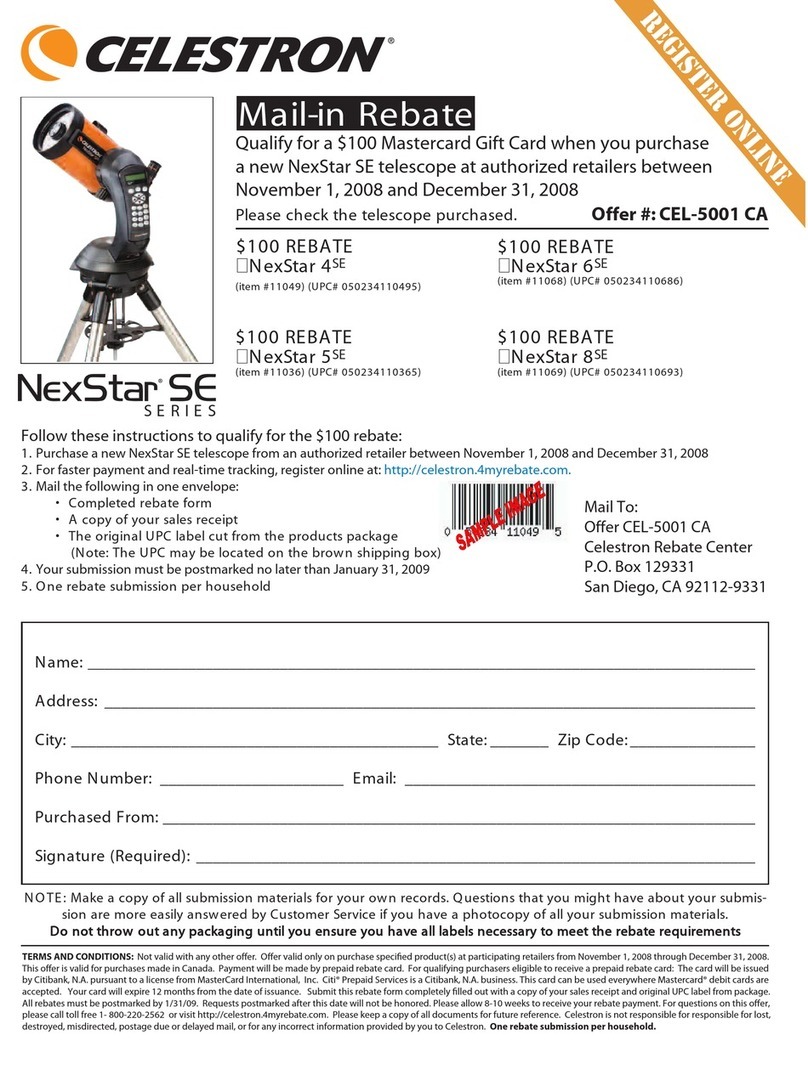
Celestron
Celestron NexStar 4 SE Specification sheet
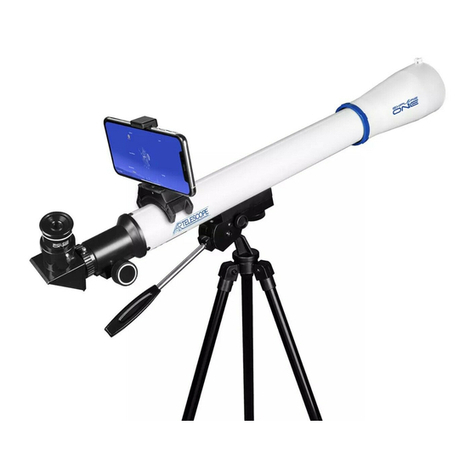
Explore One
Explore One STAR50APP instruction manual

ORION TELESCOPES & BINOCULARS
ORION TELESCOPES & BINOCULARS BX90 instruction manual
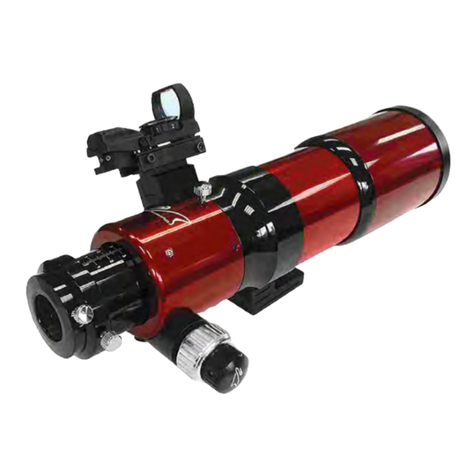
William Optics
William Optics ZenithStar 80 user guide
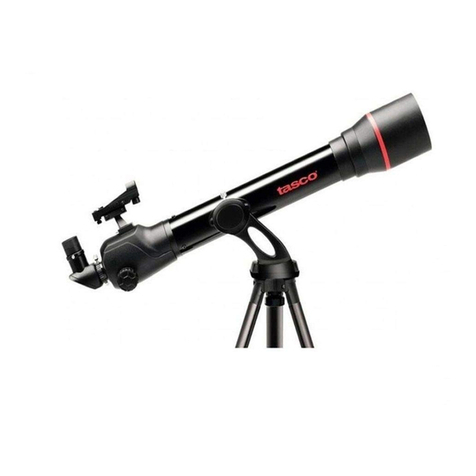
TAS
TAS Spacestation 49060700 user guide

Discovery Kids
Discovery Kids TDK23 instruction manual

ORION TELESCOPES & BINOCULARS
ORION TELESCOPES & BINOCULARS 9978 instruction manual

William Optics
William Optics ZenithStar 80 instruction manual
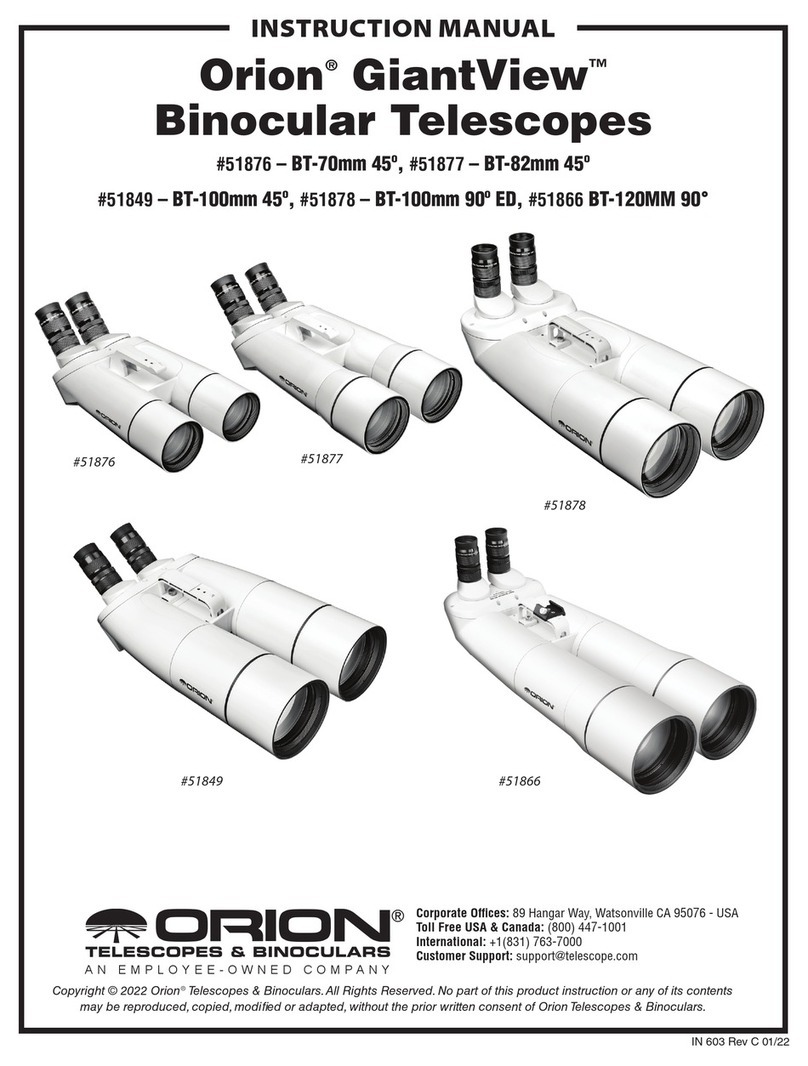
ORION TELESCOPES & BINOCULARS
ORION TELESCOPES & BINOCULARS GiantView BT-70mm instruction manual
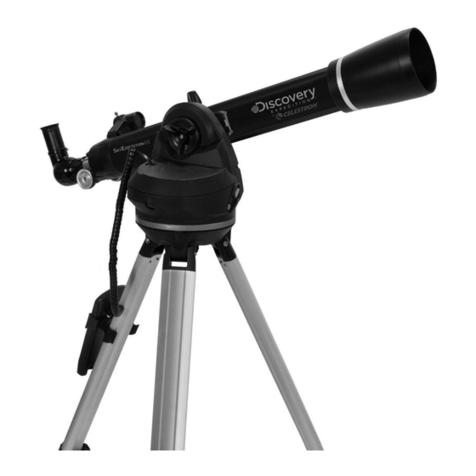
Celestron
Celestron skyexpedition 60 instruction manual

Celestron
Celestron 31055 AstroMaster 130AZ instruction manual
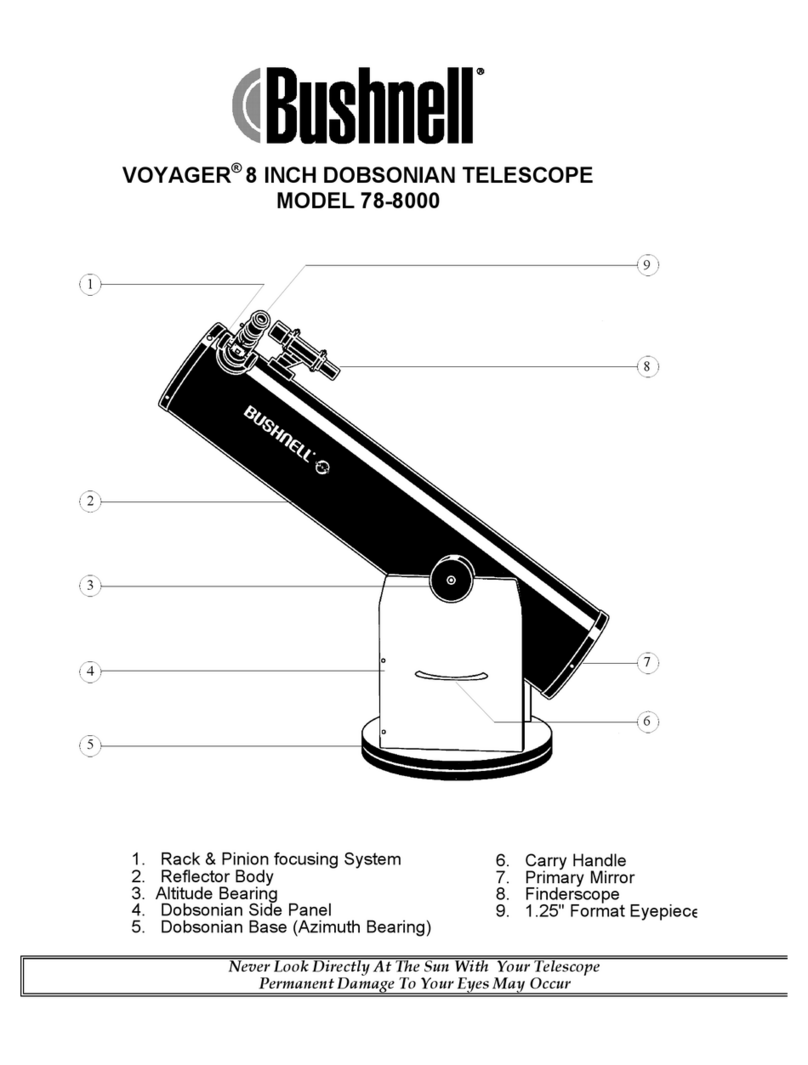
Bushnell
Bushnell VOYAGER 78-8000 user manual
